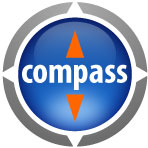
The Need for Inclusion
Diversity and inclusion are quickly moving from corporate buzz words to the fundamental ingredients to success in both global and local companies. While organizations can mandate and measure levels of diversity, inclusion is much more complex with a higher ROI when done right.
Unconscious Bias impacts so many decisions because our brains can process about 40 pieces of information every second consciously — but as many as 11 million pieces unconsciously. As a result, we make shortcuts in our minds to facilitate easier decision making.
While those shortcuts help us make quick decisions, they also move us to comfortable, predictable and reliable choices, which support status quo thinking rather than pushing for more diverse and inclusive solutions.
Program Outline
Overall Objectives:
- Introduce the concept of Unconscious Bias in an easily understandable, memorable and relatable way.
- Deepen the understanding of Inclusion and Diversity to improve relationships, teamwork and results.
- Create self-awareness of each participant’s own unconscious bias an find some simple strategies that can make them more open and empathetic to others.
Process Highlights
- Circles Activity
- Sets up the idea that we create relationships based on similarities and that can lead to excluding others that are not similar.
- In & Out of the Box – Model for Unconscious Bias and Improving Empathy and Inclusion
- The Outside of the Box
- You put the best of you on the outside for other to see.
- You judge people by what you see, hear and observe.
- Filters
- We filter other people through our experiences.
- We are unaware that we filter.
- Preferences/Priorities
- Preferences drive decision making.
- Different people have different preferences.
- We get in trouble when we assume that others have the same thinking about things as we do.
- The Outside of the Box
- Pressure
- Different people are under different kinds of pressure.
- People usually don’t talk about their source of pressure.
- To be empathetic, it is important to understand other’s pressure.
- Wearing the Box
- Bring the impact of unconscious bias to life by wearing the box.
- Small Group Activity – Vacation Advice
- This activity will be run in three different rounds.
- Each round will focus on the impacts of our unconscious bias in understanding and communicating with others.
- This exercise might need some modification for each location.
- Application
- Think about an unconscious bias that you want to improve.
- Which part of your box (your unconscious bias) could we change to improve it.
- What best practices can we adopt to improve our inclusion and diversity?
- Each participant makes a commitment to change a part of their thinking.
Key Anchors
In the program we have a number of key learning points/anchors that we want to deliver. These are brought to life through debriefs of each part of the box, and through the final debrief and action sheet.
- In & Out (inclusion) vs. In or Out (Diversity)
- What do we have in common?
- How are we different?
- How can we leverage our differences instead of seeing them as barriers?
- Let your light shine with Authenticity (The Outside).
- Authenticity
- The power of inclusion is that people are more willing and able to speak out and advocate for alternatives.
- Don’t hold back your wisdom.
- Put more of yourself on the outside of your box…
- Open Filters with Curiosity (Filters)
- Curiosity
- Open your filters to better understand and learn from others?
- How can I be more curious?
- To open your mind: Judge Less (Preferences)
- Openness
- Be less judgmental.
- What preferences can I adjust to make more space for the differences?
- Act with empathy (Pressure)
- Empathy
- Listen from the inside out
- Don’t judge based on what is on the outside.
- Listen from the inside out to better understand others.
- How can I better understand and be more inclusive?











